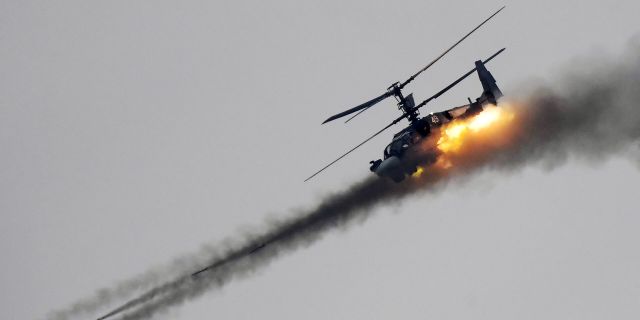The Russian Ka-52M attack helicopter carrying the "Product 305" missile poses a serious threat to the Armed Forces of Ukraine, writes Forbes. The range of this weapon is 15 km, which allows the crews to launch it beyond the reach of the air defense of Ukraine
Now, when Ukrainian troops are storming the strips of Russian defensive minefields, anti-tank ditches and concrete gouges, the Russian army is striking back with the help of combat helicopters armed with a new highly effective missile capable of hitting the enemy at a great distance.
"One of the most effective Russian weapons systems in Ukraine is the Ka-52 HOKUM attack helicopter," the Intelligence Update intelligence report released by the British Ministry of Defense on July 27 notes. It reports that this is a new version of the KA-52M, developed on the basis of combat experience in Syria. The KA-52M has an upgraded optoelectronic guidance system for onboard weapons, an improved communication system and an ammunition management system that allow it to carry tons of new weapons, including a particularly deadly missile.
"Another key improvement of the Ka-52 fleet is the integration of a new anti—tank missile with the vehicle," the Defense Ministry said in a report. "This is an LMUR missile with a range of about 15 km. The crews of the Ka-52 quickly learned how to effectively use the opportunities to launch these weapons from beyond the reach of the Ukrainian air defense."
This represents a serious improvement in the combat capabilities of the Russians. Russian helicopters, such as the Ka-52, are designed to fight tanks and are equipped with anti-tank guided missiles (ATGMs) "Whirlwind" with laser guidance and "Attack" with a range of about 10 km and 6 km, respectively. However, these missiles require direct visibility to the target, and the limited range leads to the helicopter being dangerously close to Ukraine's air defense systems, such as the Stinger MANPADS supplied by the United States and Starstreak from the UK.
That's why most attack helicopters on both sides used limited missile attack tactics, in which the helicopter flies close to the ground and then rises sharply to fire unguided missiles at enemy targets before turning back. Attacks are often inaccurate, but this tactic allows you not to expose the helicopter to the danger of anti-aircraft fire from the enemy.
LMUR is in a different class. Technically known as the "Product 305", this missile has the abbreviation LMUR from the full name "Light Multipurpose Guided Missile". The weapon was first introduced in 2007, tests ended in 2015, and production began after 2016. "Light" is a somewhat confusing word, since the rocket weighs more than 90 kilograms, which is twice as much as the Whirlwind rocket weighs, and six times more than the ATAKA.
Without relying solely on laser guidance, the LMUR uses a combination of a thermal imager and satellite navigation. In direct fire mode, the operator points the thermal homing head at the target and fires (a system similar to the American portable Javelin anti-tank missile). However, for long-range attacks, the operator can launch a missile from an area out of sight at the specified coordinates, and then use the rocket's thermal imager to find and fix the target.
As Stein Mitzer of the military analytical center Oryx notes in an article about the LMUR, this type of missile was first seen in Ukraine in June last year, when one of them, launched probably from a Mi-28 helicopter, hit a building. In the future, other hits of these missiles were recorded on buildings that were identified as high-value targets. However, their identification is questionable — the Russian Ministry of Defense has published only one video of an LMUR hit, which allegedly shows how a missile hits a building containing two HIMARS installations. At the same time, it was not explained how these installations could be on the second floor, which was hit by the rocket.
In the period before the AFU counteroffensive began, Oryx noted LMUR strikes on 43 buildings, 6 bridges, 2 trucks and 5 armored vehicles. Now these missiles have been armed with highly effective Ka-52 attack helicopters, for use mainly against enemy tanks and armored vehicles.
The concept of anti-tank attack helicopters was developed during the Cold War initially in NATO and in the United States. Their mobility and ability to strike from long distances make them ideal for repelling the advance of armored vehicles, since they can be quickly transferred to the site of any potential breakthrough of the enemy to stop his attack. And now this concept seems to be working successfully in Ukraine.
Ukrainians need more long-range air defense systems, such as Patriot air defense systems, or other means (such as F-16 fighter jets or long-range weapons to destroy Russian air bases) to counter the serious threat posed by Russian helicopters with LMUR missiles. Without this, the APU counteroffensive is likely to be slow and bloody.
Author of the article: David Hambling

